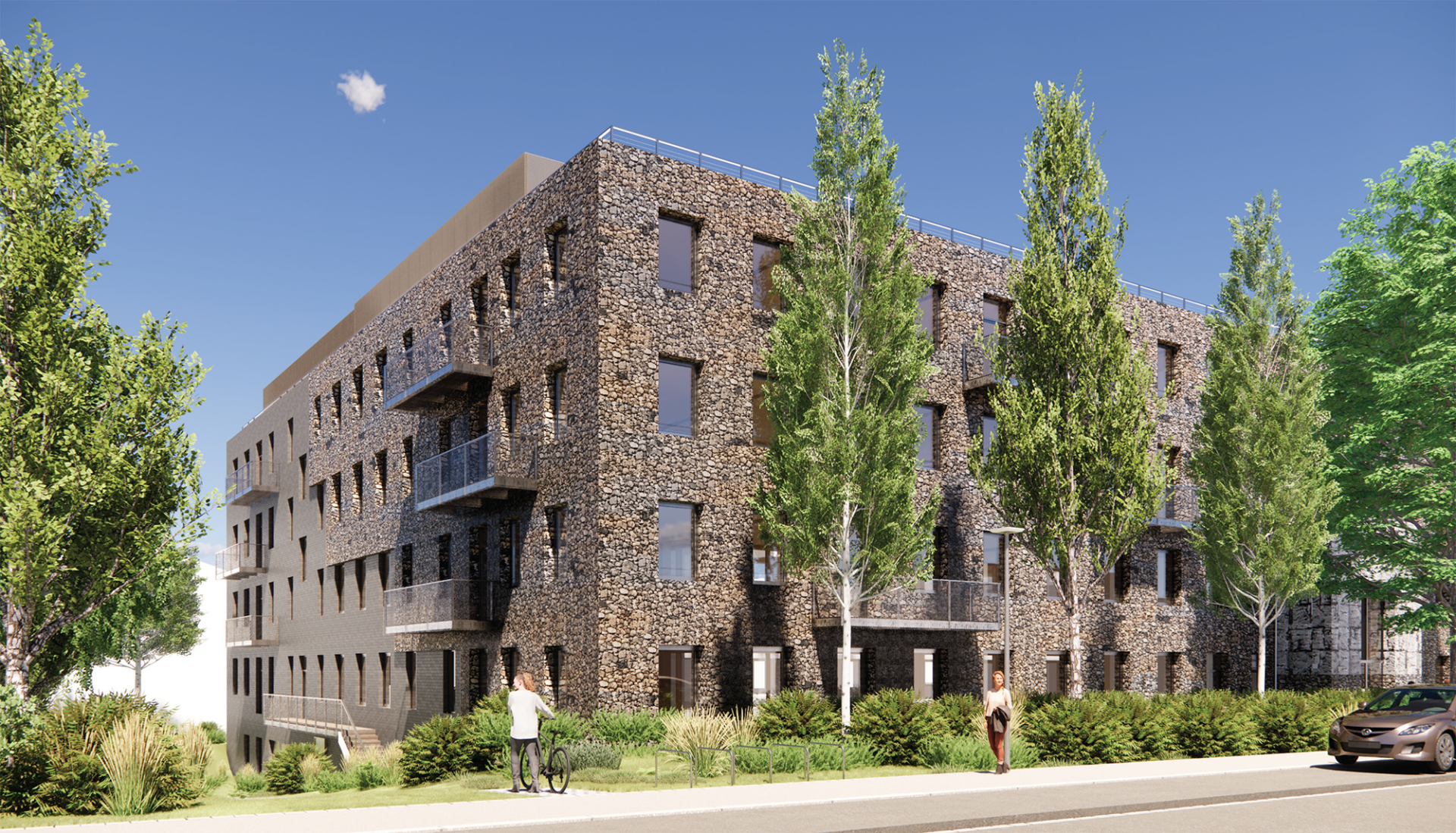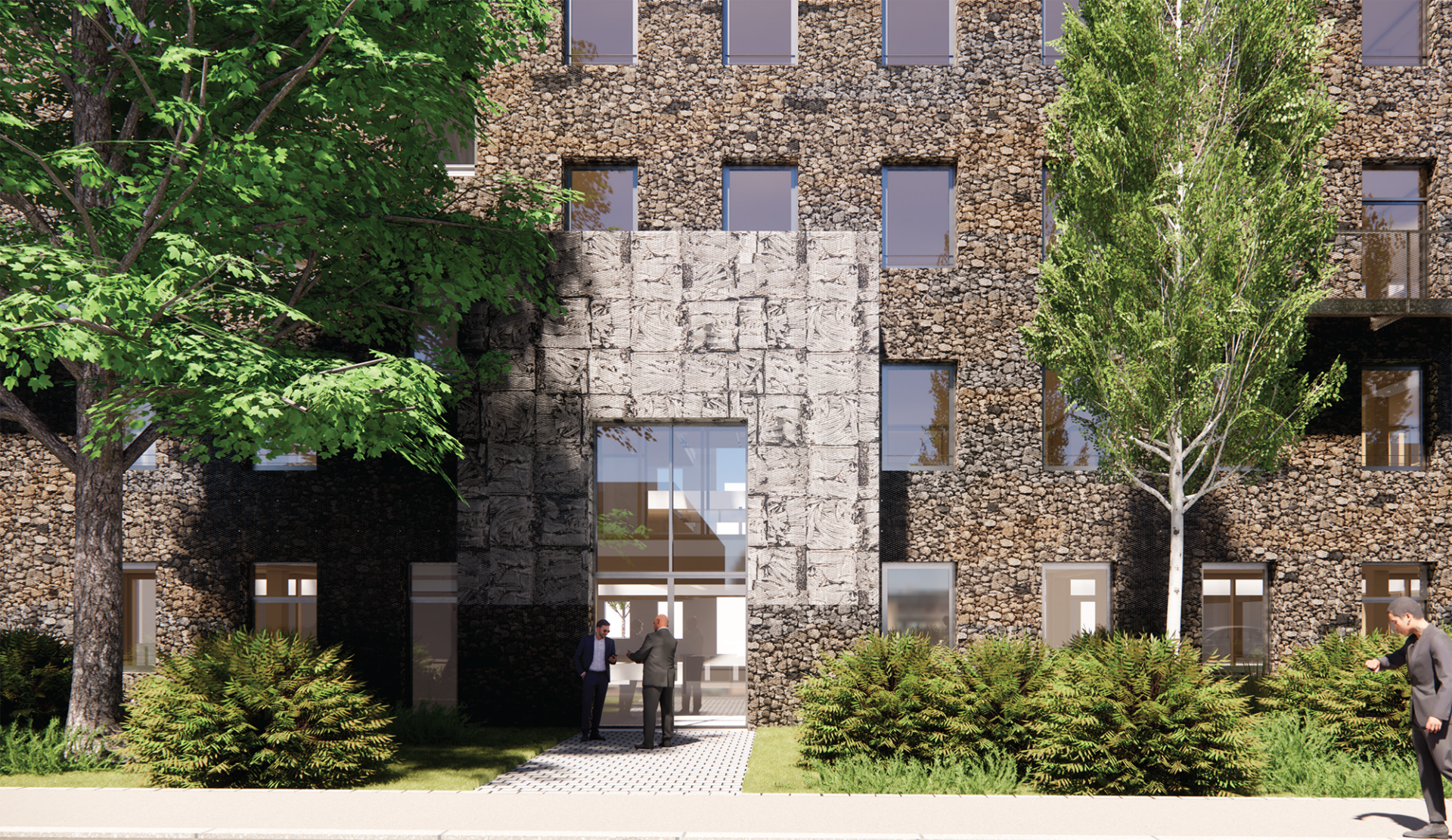inviting nature into the city, or rather restoring its place, is one of the key ideas behind the office project, The Nest
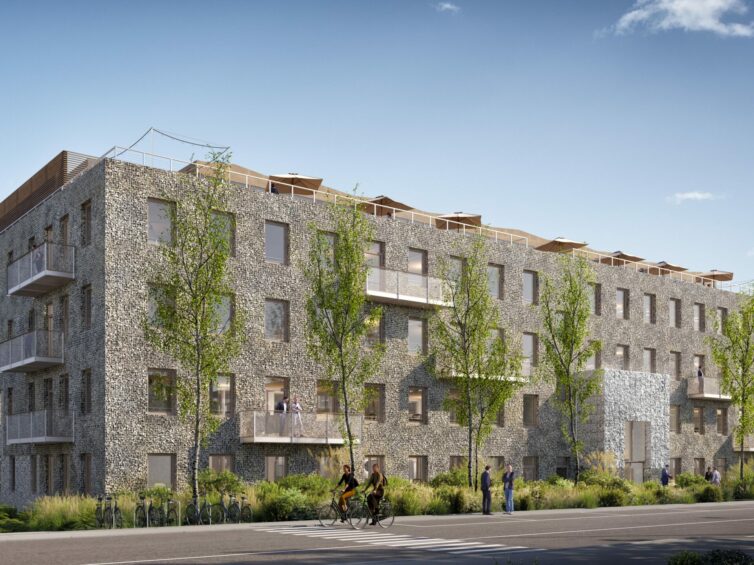
inviting nature into the city, or rather restoring its place, is one of the key ideas behind the office project, The Nest

More than just an office building with its services, The Nest embodies the ambition of its developer: to create the city of tomorrow. The building not only welcomes its users in a pleasant and caring environment but also the fauna and flora long pushed beyond the city limits.
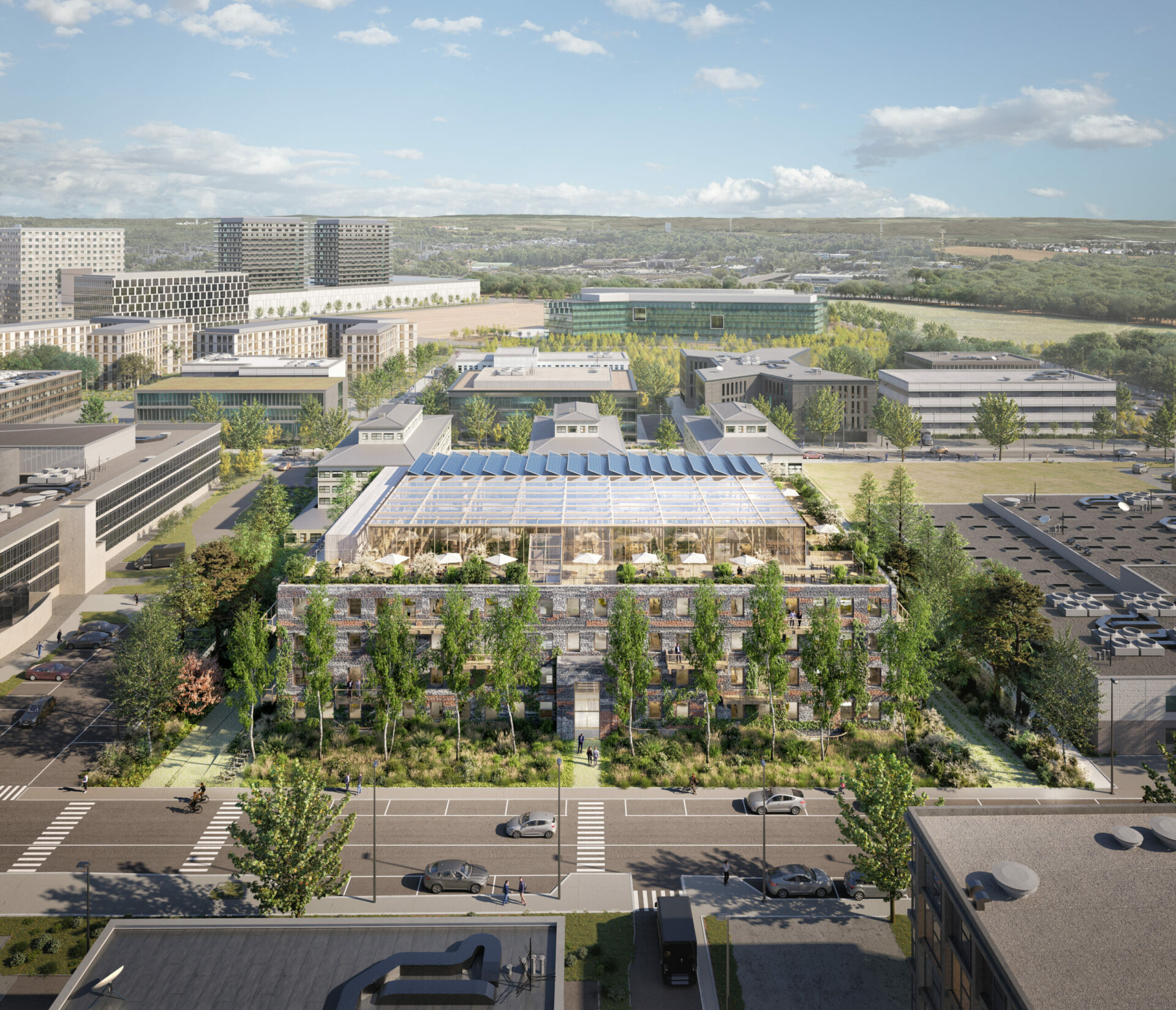
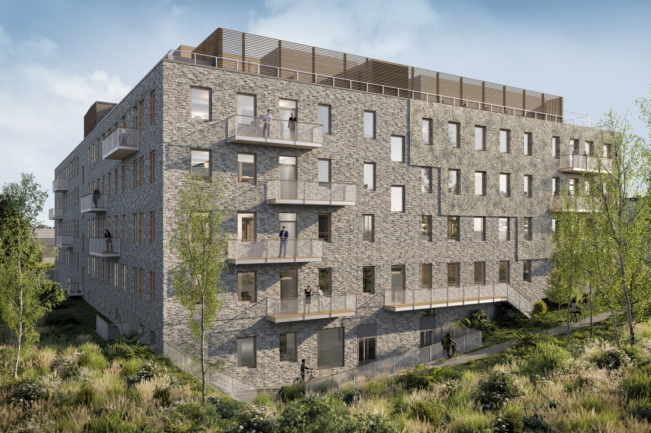
| program | 7.200 sqm offices, 4 levels, lush garden, ground floor services, rooftop restaurant & bar, sustainable mobility |
| client | Eaglestone Luxembourg |
| address | 5 rue Henri M. Schnadt • La cloche d'or • L-2530 Luxembourg |
| building type | work |
| status | conception |
| expertises | architecturebimproject managementconstruction management |
| offices | luxembourg |
| size | 10.400 sqm |
| team | • architect: assar architects & Maison Edouard François . Paris • interior architect: Maison Edouard François . Paris • client: Eaglestone Luxembourg • structural engineering: Simon & Christiansen . Luxembourg • fluid engineering: Felgen . Luxembourg • special technical engineering consultancy: Felgen . Luxembourg • landscape architect: la compagnie du Paysage . Paris • lighting study: assar architects |
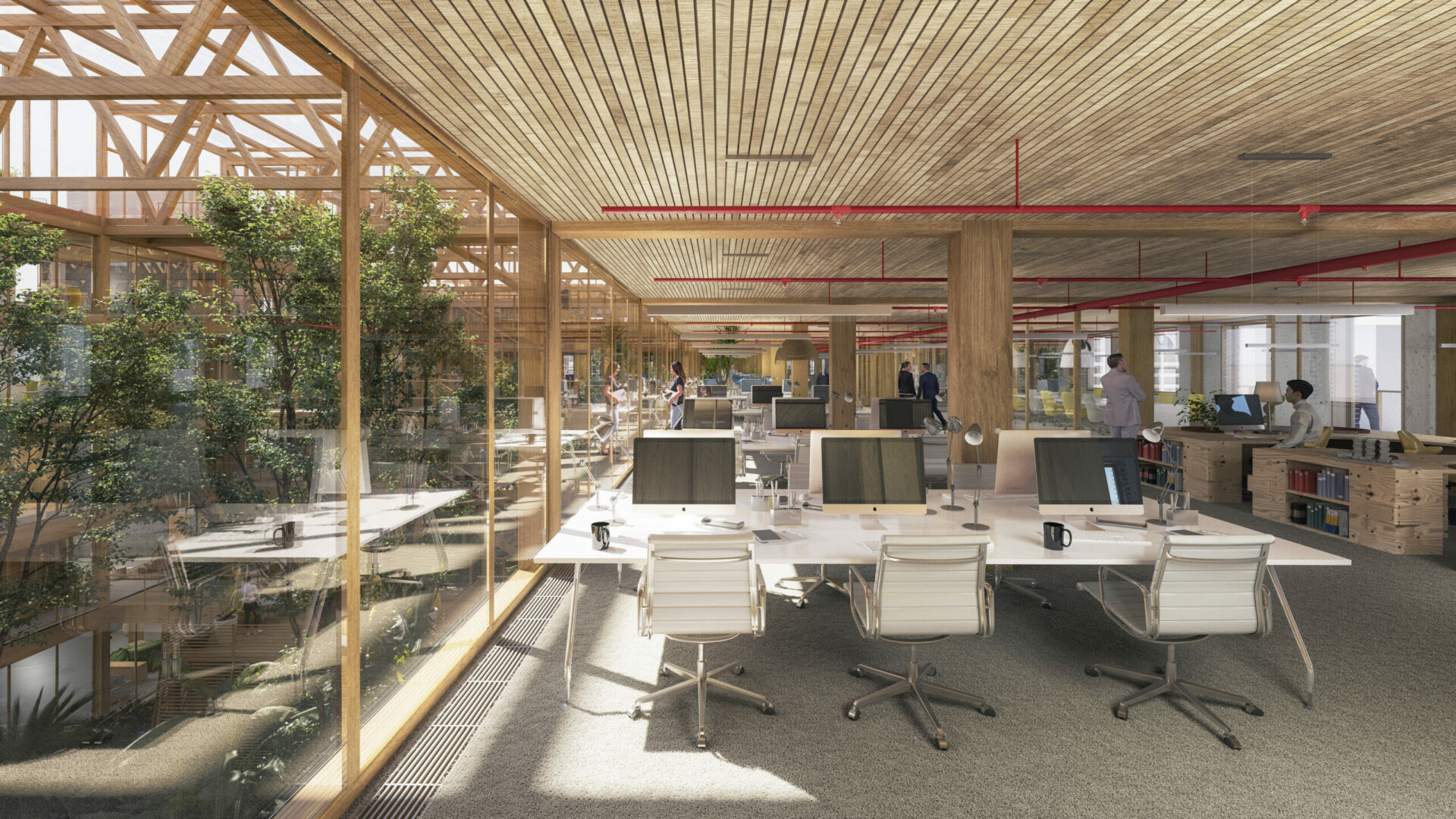
Located in the south of the city of Luxembourg, La Cloche d’Or welcomes The Nest. This neighborhood, in full effervescence, focuses on sustainable mobility and the integration of vegetation, aiming to become a place where work harmonizes with well-being. Our project actively contributes to this vision.
The surrounding plantations are indigenous, meticulously selected to be perfectly adapted, rich, and dense. They are designed to regenerate local wildlife on an urban scale, allowing it to thrive sustainably. Wood and stone piles, as well as nesting boxes, are strategically placed to attract insects, birds, and small mammals. This microcosm, often displaced from its natural habitats, should be able to relocate, find a new balance, and organize itself in perfect symbiosis.
But that’s not all; the building’s atrium pulses like a vegetated heart, adorned with acclimated plants this time. A ground-level garden occupies the space, enlivening the communal functions of the structure: restaurant, fitness center, auditorium, conference, and training rooms.
Paths adorned with suitable furnishings allow employees and visitors to take some time to recharge and immerse themselves in this natural environment.
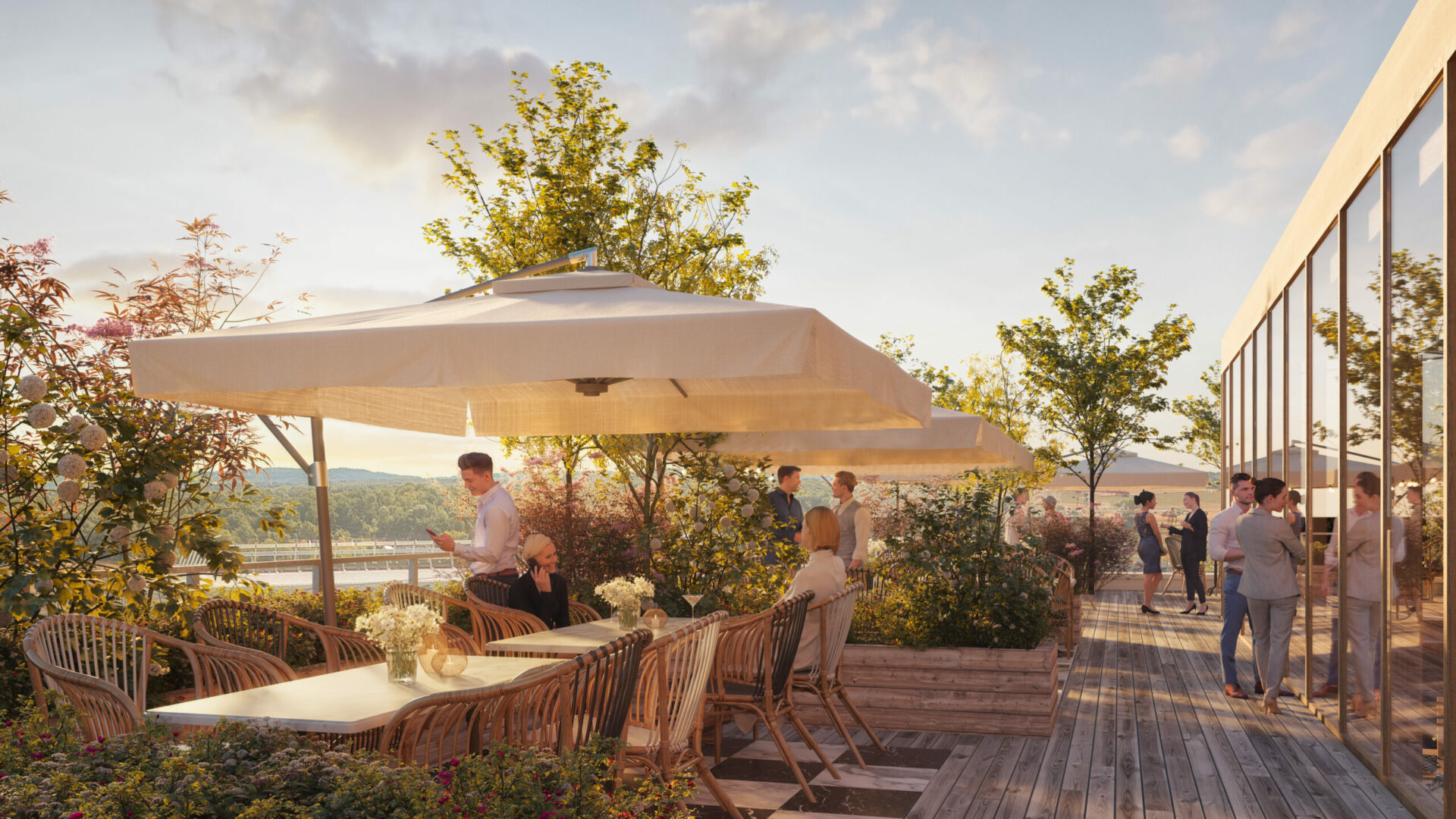
The concept envisions a modest construction, devoid of extravagance. With its predominantly grey facades, composed of gabion cages filled with aggregates sourced from the deconstruction and reuse sector, The Nest presents itself as a natural fortress. The windows are punctual, rhythmic, and occasionally a door opens onto a balcony here and there. The enclosure is breached only at one point, the main entrance, like a fissure in this thick shell. Once in the lobby, the tone is set between natural, low-carbon materials (wood) and reclaimed materials. It is through the latter that the brand image is announced, with marbles salvaged from prestigious locations nearby. That’s the goal: to traverse the deconstruction sites in the area and give a second life to these carefully selected elements.
Today, the office is no longer conceived solely as a place of work. It must allow occupants to feel comfortable and to have enriching experiences. While the forest surrounding the Nest sets the initial tone, the planted interior sanctuary is the preferred place for encounters. Terraces, a barista, and pathways are all gathering points for organizing meetings, discussions, or workshops, in perfect harmony with values oriented towards well-being and human development. The central space offers a rich, natural environment and an appreciable quality of life.
The five levels of office floors and the various service and leisure functions are arranged around a bright, protected atrium entirely constructed of wood. The atmosphere here is calming. The main accesses are provided through a juxtaposition of wooden decking walkways, offering varied views of a lush canopy. Each passage invites escapism and discovery, an effective way to recharge.
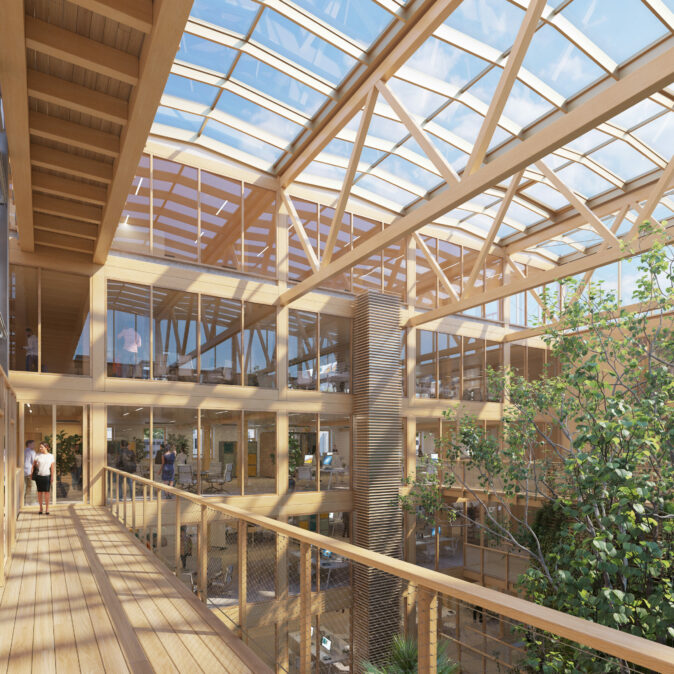
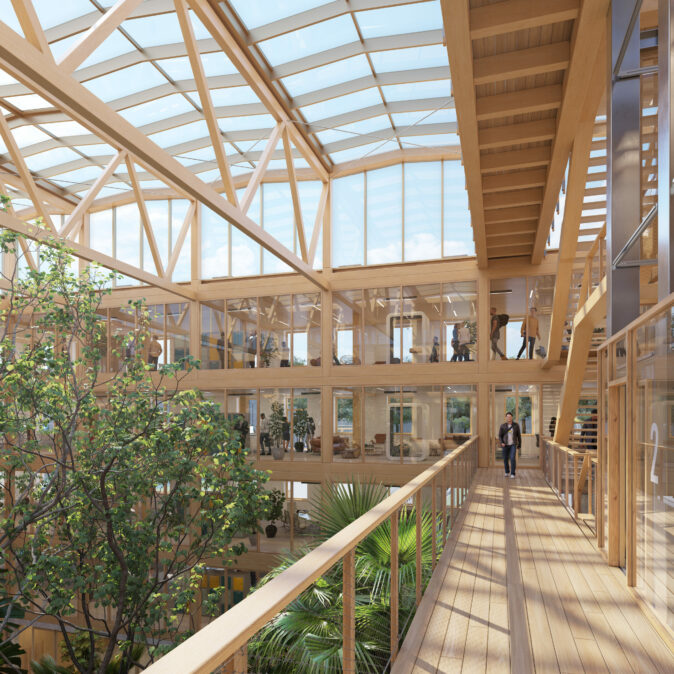
One way to bring a human scale to a workplace is to integrate artisanal elements through traditional craftsmanship. Essential elements are crafted by artisans, such as the main luminaire in the entrance hall, the wicker cladding of the ventilation ducts in the atrium, or other vintage furniture sourced and restored. Breaking away from stereotypes and industrialization brings about surprises and gives each place its own specific identity to discover. The sinks in the sanitary facilities, carved from reclaimed marble slabs, are just one example.
• categories: AAA
• certifications:
º Carbon footprint: Neutral (the study suggests minimizing carbon emissions as much as possible. The balance will be offset by reforesting desert areas elsewhere in the world. An initial estimate was a budget of 200,000€. We are currently working to further reduce the carbon footprint)
º BREEAM: Outstanding
º WELL Core: Platinum
º BiodiverCity: AAAB, notably thanks to the ground-level garden, as well as the gabion facade dedicated to welcoming insects, birds & other small fauna. Respectful nighttime lighting is also under study
